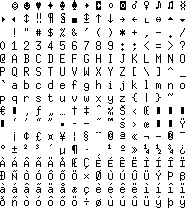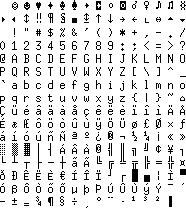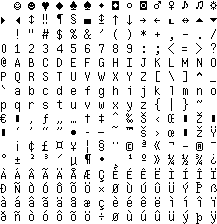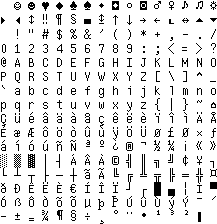6x13

7x14

I work in a mixed environment of Microsoft Windows and Unix(Solaris)/Linux. Most of the time I spend editing text in a terminal window using the fabulous editor vim. In Unix/Linux I work in an xterm and I like the tall fonts fixed and Screen. They are easy readable and you can have two pages side by side. However, in Microsoft Windows I find most fonts for the command window (DOS prompt) too wide/bold, giving a compact look of the text.
Back in 1999 I therefore created a MS Windows bitmap font from an enlarged screen dump of the X Windows font fixed. I could then use the font I was used to from the xterm in Visual Studio and other Windows programs. However, the font was not recognized by the command prompt. But in some spare hours during Christmas 2002 I decided to find out why.
Browsing with Google didn't bring any results - apparently I couldn't guess the right search words. A posting to comp.os.ms-windows.misc lead to a great page DOSFon - Better fonts for the DOS-Box and editors by Uwe Sieber, which had the answer: The font must have the OEM-flag set and the internal name must be "Terminal" to make Windows use it for DOS-Boxes and consoles.
There was also a link to the Microsoft Knowledge Base article Q247815: Necessary Criteria for Fonts to Be Available in a Command Window. (and now I also got some good hints at good search words :-)
So, I set the OEM-flag and changed the internal name to Terminal and voilą, the font showed up in the Fonts tab in the CMD Properties dialog box. But the Danish characters were wrong, and I realized that the font must be encoded in the code page used by the command window (typically 850) in stead of the normal Windows code page 1252.
The fixed font has to exist in two versions: one encoded in code page 1252 for e.g. Visual Studio, Notepad and other Windows programs, and one encoded in code page 850 with the OEM-flag and the name Terminal.
After having found the formula and created the two versions of the fixed font, I also did two versions of the Screen font, which I find very nice.
Here is a sample of the characters in the X-Windows fonts fixed and Screen.
| fixed
6x13 |

|
| Screen
7x14 |

|
You should download and install both code pages of either font.
The code page 1252 font will show up in e.g. Visual Studio, Notepad and
any other Windows program.
The code page 850 font will just show up in the Fonts dropdown list
in the command window (or in the Fonts tab in the CMD Properties dialog box)
as 6x13 (fixed) or 7x14 (Screen).
CP 1252 contains the Euro currency symbol at position 128 (0x80).
CP 850 contains the Euro currency symbol at position 213 (0xD5) as
defined by IBM.
fixed 6x13 | |

code page 1252 |

code page 850 |
| |

code page 1252 |

code page 850 |
Please e-mail any comments to me.
| The fonts are free to use.
However, some people wanting to express their contentment in a more tangible way have asked if I take donations - so here you have it! Thank you. |
Last updated August 29, 2004